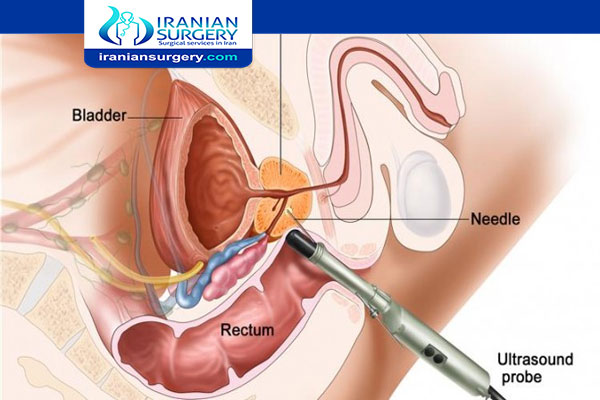Signs and symptoms of prostate cancer
What kind of anesthesia is used for prostate biopsy?
Are you put to sleep for a prostate biopsy?
How painful is a prostate biopsy?
How long does a prostate biopsy take?
Signs and symptoms of prostate cancer
Most prostate cancers are found early, through screening. Early prostate cancer usually causes no symptoms. More advanced prostate cancers can sometimes cause symptoms, such as:
- Problems urinating, including a slow or weak urinary stream or the need to urinate more often, especially at night
- Blood in the urine or semen
- Trouble getting an erection (erectile dysfunction or ED)
- Pain in the hips, back (spine), chest (ribs), or other areas from cancer that has spread to bones
- Weakness or numbness in the legs or feet, or even loss of bladder or bowel control from cancer pressing on the spinal cord
Most of these problems are more likely to be caused by something other than prostate cancer. For example, trouble urinating is much more often caused by benign prostatic hyperplasia (BPH), a non-cancerous growth of the prostate. Still, it’s important to tell your health care provider if you have any of these symptoms so that the cause can be found and treated, if needed. Some men might need more tests to check for prostate cancer.
Read more about: Orchiectomy surgery for prostate cancer
Read more about : Pancreatic cancer
Read more about : Prostate Cancer Treatments Pros and Cons
Read more about : Cancer Treatment
During the prostate biopsy
You will be asked to lie on your side with your knees pulled up to your chest. You might be asked to lie on your stomach. After cleaning the area and applying gel, your doctor will gently insert a thin ultrasound probe into your rectum.
Transrectal ultrasonography uses sound waves to create images of your prostate. Your doctor will use the images to identify the area that needs to be numbed with an injection to reduce discomfort associated with the biopsy. The ultrasound images are also used to guide the prostate biopsy needle into place.
Once the area is numbed and the biopsy device is situated, your doctor will retrieve thin, cylindrical sections of tissue with a spring-propelled needle. The procedure typically causes a very brief uncomfortable sensation each time the spring-loaded needle takes a sample.
Your doctor may target a suspicious area to biopsy or may take samples from several places in your prostate. Generally, 10 to 12 tissue samples are taken. The entire procedure usually takes about 10 minutes.
Read more about: prostate biopsy bleeding
Read more about: prostate cancer treatments pros and cons
Read more about: Transurethral resection of the prostate (TURP)
What kind of anesthesia is used for prostate biopsy?
The procedure may be done under a local or general anesthetic. (Local anesthetic means medicines are used to make you numb). Local anesthesia Just the area that is being operated on is numbed, given as an injection and may also be given with a sedative. General anesthetic means medicines are used to put you into a deep sleep during the procedure.) General anesthesia Blocks pain and keeps you asleep through the surgery.
Are you put to sleep for a prostate biopsy?
Biopsies may be done under local or general anesthesia. For local anesthesia, medicine is injected to numb your breast. You will be awake, but feel no pain. For general anesthesia, you will be given medicine to put you into a deep sleep during the biopsy.
How painful is a prostate biopsy?
The most common complications of prostate biopsy are Pain in the area between the anus and scrotum for a few days to a week and Blood in your urine for a few days to several weeks. You will feel some pressure when the probe is inserted, but it is usually not painful. Usually between 6 – 12 (sometimes more) prostatic tissue samples are obtained and the entire procedure lasts about 10 minutes. A local anesthetic can be used to numb the area and reduce any pain. Most men do not find prostate biopsy excessively painful or uncomfortable, and the complications are usually not serious.
Read more about: prostate biopsy preparation
Read more about: prostatectomy complications
Read more about: prostatectomy recovery
Read more about: In laparoscopic prostatectomy
Read more about: prostate biopsy anesthesia
How long does a prostate biopsy take?
The biopsy itself takes about 10 minutes and is usually done in the doctor's office. You will likely be given antibiotics to take before the biopsy and possibly for a day or 2 after to reduce the risk of infection.
Read more about: radical prostatectomy steps
Read more about: Prostate biopsy complications



